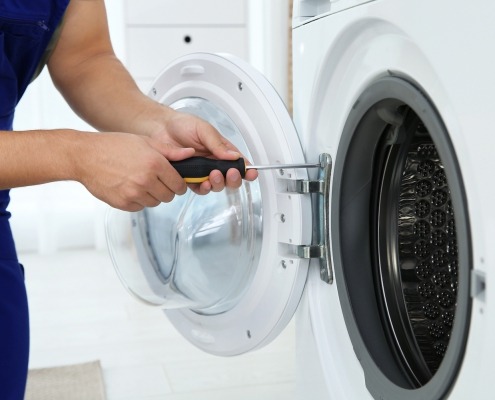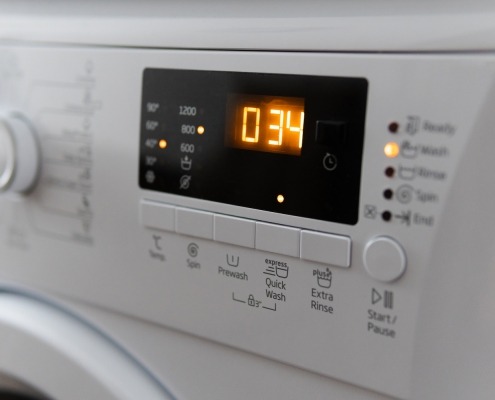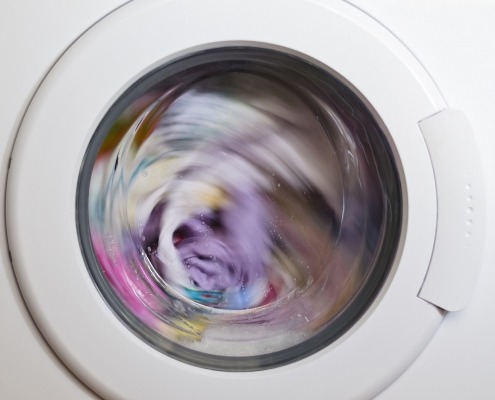How to replace a Whirlpool washer plunger guide tube
Steven E / Monday April 21, 2025
Is your Whirlpool washer making strange noises or failing to drain properly? It might be time to replace the plunger guide tube, the small yet crucial component that keeps your machine running smoothly during wash cycles. Watch our step-by-step video below to learn how you can tackle this repair yourself and get your laundry routine back on track in no time!
Looking for the right part? Enter your appliance model number below to find the exact match and get your appliance running like new again!
On a Whirlpool washer, the plunger guide tube is responsible for guiding the plunger during the agitating and spinning cycles, allowing your washer to properly agitate and drain water.
Common signs that indicate the need for replacement include excessive noise during the wash or spin cycles, the agitator not moving correctly, or water not draining properly from the washer.
You can find a replacement plunger guide tube here. If you need other replacement parts for your Whirlpool washer, just enter your model number at AppliancePartsPros.com to find them. It’s that easy! Most orders arrive in just two business days, and we have thousands of guides to show you how to install your new parts.
Watch here: How To: Whirlpool/KitchenAid/Maytag Plunger Guide Tube WP22002757
The information in this article may not apply to your specific appliance model. We recommend consulting your manufacturer’s documentation or contact us with any questions.
Tools and materials
- Replacement part (make sure it’s compatible with your model before installing)
- Flathead screwdriver
- Phillips screwdriver
- 5/16″ nut driver
Safety precautions
When working on any appliance, remember to keep safety first. Here are some tips to keep in mind:
- Always power off and unplug your appliance or switch off the circuit breaker before attempting any maintenance or replacement work. This keeps you safe by preventing any risk of injury from electric shock.
- Turn off the water supply at the outlet before beginning repairs to any appliance parts that hold water. Have towels ready for any residual water in the system when removing parts.
- Wear insulated work gloves to protect your hands from sharp metal parts, pinching hazards and debris.
- Don’t test wiring with a multimeter for live voltage if you’re unfamiliar with how to prevent short circuiting when testing.
- When working with wires, avoid touching any exposed wires or terminals. If you need to touch a wire, use a non-conductive tool or wear insulating gloves to prevent electrical shock.
- Take your time and don’t rush while working to prevent accidents and personal injuries.
- Work in a well-lit area so you can clearly see and access the interior parts.
- Clear your workspace of clutter and other obstacles. Keep children and pets away from the work area.
- Never work on internal parts with bare wet hands. Make sure the work area is completely dry.
- Check your user manual to see if there are specific installation or safety instructions for your part or appliance.
- Be gentle when handling or removing parts. Excessive force might damage the appliance or cause injury.
- Wear safety glasses when working with chemicals, dust or cleaning large debris to prevent injury.
- If the appliance has recently been used, give it plenty of time for any heating parts to cool down before working on it.
- Take pictures or make a note of wiring connections before disconnecting to prevent any problems with reassembly.
Replacement steps
Step 1: Disassembly
- Open the lid of the washer.
- Use a flat-blade screwdriver to lift the locking pin on one of the hinges and pull the entire hinge out.
- Repeat this step for the other hinge.
- Pull the washer door out and set it aside.
- Take a Phillips screwdriver and remove the two screws that hold the guide tube from the front.
- Use a 5/16 inch nut driver to remove the three screws from the back of the console.
- Lift the back of the console and pull it off to remove it.
- Locate the lid switch and use a flat-blade screwdriver to gently pull up the locking tab.
- Push the switch forward to disengage the side tabs.
- Once the lid switch is disengaged, remove the plunger guide tube.
Step 2: Reassembly
- Take the new plunger guide tube and align the holes in the front with the corresponding openings.
- Use a Phillips screwdriver to tighten the screws properly and secure the guide tube in place.
- Slide the plunger into the guide tube.
- Install the lid switch by matching the cutouts on the switch with the posts on the side.
- Press it down firmly and push it back until it locks into place.
- Place the console back on the washer. Make sure that the holes on the console align with the aligning posts on the washer.
- Lower the console down and push it forward to secure it.
- Use the three 5/16 inch screws to secure the console from the back.
- Insert the left side hinge into the opening in the cabinet and align the two holes.
- Insert the pin into the hole to secure the hinge in place. Make sure that the tab on the hinge locks into the lid.
- Close the lid of the washer.
- Open and close the lid to check that everything is properly installed and functioning correctly.
- Plug the washer back in and make sure it runs smoothly without any issues.
Additional information
Thanks for reading! We hope this guide helped you replace the plunger guide tube on your Whirlpool washer.
If you still need some replacement parts, grab your model number and head over to AppliancePartsPros.com. We offer over two million parts and most orders arrive in two business days. If you need some help with finding the right part or placing an order, you can contact our team at 1 (877) 477-7278.
While you’re waiting for your new part to arrive, you can explore our DIY blog and watch thousands of video tutorials on our YouTube channel.
Be sure to follow us on Facebook, Twitter and Instagram to see our latest repair guides!
With nearly a decade of experience in providing top-notch customer service regarding appliance parts and repair, Steven enjoys sharing practical advice, troubleshooting tips, and interesting information to help readers stay informed.





